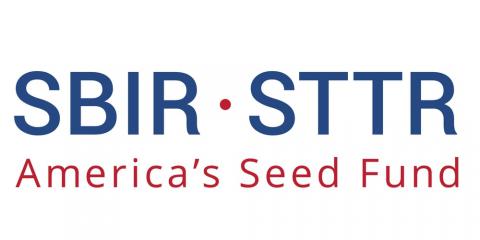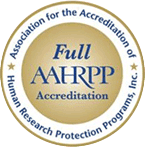Announcement: ITS Updates Mass Email Policy
Information Technology Services (ITS) has updated their Mass Email policy to include a new requirement. All mass email requests will now be required to use a valid @uiowa.edu email address in the From, Reply To, and Requestor email fields on the request form. This affects all researchers who use UI mass email to advertise and recruit for research studies. The HSO’s role will remained unchanged. Our office will continue to verify that the proposed recruitment method and the email message is consistent with IRB approved content.
For additional information, review two articles located on the ITS website:
Discoveries and Technology Transfer at Iowa: Best Byway for Bench to Bedside?
Martha Hedberg, MPA, COI Specialist


Noted chemist and contributor to the discovery of the DNA double helix Rosalind Franklin said, “Science and everyday life cannot and should not be separated.” Nowhere is this more true than at the juxtaposition of academic research and technology transfer. (read more) We live in a rapidly evolving and globally connected age of information, data, details. These ideas bring us better health, smarter computers, safer engineering, more efficient work days, longer lives…and jobs. With today’s economic climate and budget reductions, it is crucial to move research discoveries to the public domain.
Moving information, technology, and science from the academic arena to the public occurs through the process of commercialization. Several federal agencies support this commercialization process through two funding mechanisms.
Small Business Innovation Research (SBIR)
Established by the Small Business Innovation Development Act of 1982, the SBIR program is designed to encourage small businesses to engage in federal research/research and development (R/R&D). Phase I awards allow companies to establish technical merit and commercial potential. Companies can then apply for larger, Phase II awards to further develop the research and its commercialization. To date, the program has resulted in over 70,000 patents, nearly 700 companies, and approximately $41 billion in venture capital investments.
Funding agencies include the National Oceanic and Atmospheric Administration; Departments of Energy, Homeland Security, Defense, Agriculture, Commerce, Transportation, Education, Health and Human Services; Environmental Protection Agency; National Aeronautics and Space Administration; and the National Science Foundation (NSF).
Each agency has certain requirements, but nearly all include language regarding who can be the principal investigator for the company. At minimum, it is typically required that the PI’s primary employment be with the startup. For example, the Department of Defense requires,
“The Principal Investigator must spend more than one-half of the time employed by the proposing firm…”
Small Business Technology Transfer (STTR)
The STTR program provides funding from five federal agencies for specific research and development (R&D) foci of interest to the respective agency. The guiding principles of the STTR program are straightforward
- Stimulate technological innovations
- Foster technology transfer through cooperative R&D between small businesses and research institutions
- Increase private sector commercialization of innovations derived from federal R&D
The STTR program requires that small businesses contractually engage with nonprofit research enterprises. Typically this requirement is executed in a subcontract from the UI-affiliated startup to the University of Iowa. However, the startup may subcontract to any nonprofit research institution.
Depending on the funding agency, there may also be effort requirements as there are with SBIRs. For example, NSF applies the employment requirements, stating
“However, the PI MUST be more than 50 percent legally employed by the proposing small business by the time of the award and for the entire duration of the Phase I project. NSF normally considers a full time work week to be 40 hours and considers employment elsewhere of greater than 19.6 hours per week to be in conflict with this requirement. Additionally, anything that prevents an individual from meeting this legal employment requirement (including residency status or university policy) will make that individual ineligible to be PI.”
Conflicts of Interest and Commitment
Forming a company to further develop and commercialize research is beneficial not only to the University and broader “everyday life,” it can also be profitable for the individual researcher-inventors involved. The act of forming a company provides ownership of (or equity in) a privately held company. This could create either a financial conflict of interest or conflict of commitment if you retain a University of Iowa appointment. Aspects of commercialization that can create financial conflicts of interest are personal compensation, royalty income, and fiduciary duty. These conditions also apply to the research-inventors’ spouses and dependent children. University of Iowa faculty are allowed no more than nine business days per academic term to engage in external activities. Starting a company can take time. If the number of business days devoted to starting the company exceeds nine days, the respective Departmental Executive Officer (DEO) may choose to initiate a management plan.
Another form of conflict of interest that often arises in SBIRs and STTRs is institutional. Institutional conflicts of interest only apply to human subjects research, and occur when either the University of Iowa or one of its officials has an interest in a startup company.
Catch-22
Investigators may feel as though they are caught in a Catch-22. You have developed a new drug, device, or technique. This invention or discovery has the potential to ease suffering, improve lives, or provide alternative or safer resources. You have started a new company designed to further develop and commercialize the technology. Your company receives an award through an SBIR or STTR funding mechanism. The air is heady with entrepreneurism! Then comes the news…you have a conflict of interest. And there may be other research compliance bridges to cross and subcontracts to negotiate.
How We Help
A multi-disciplinary team from various units under the Office of the Vice President for Research and Economic Development have come together to develop guidance and resources for investigators considering applying to the SBIR or STTR program. Units available to provide assistance include
- UI Ventures
- Conflict of Interest in Research
- UI Research Foundation
- Division of Sponsored Programs
- Human Subjects Office/Institutional Review Board (IRB)
- Office of Animal Research
Staff from each of these offices are available to provide individual researcher guidance. A listing of these offices and staff contact information is currently located on the DSP website. All of these units work closely together, along with researcher-inventors, to help navigate requirements and University of Iowa policy. We are here to help you close the gap between science and everyday life.
For additional information and assistance, please consider attending the SBIR/STTR Workshop on November 1, 1:30 p.m., Rembolt Conference Room, 115 Center for Disabilities and Development on the UI campus (300 Hawkins Drive).
The Role of Patient Advocacy Groups in Research
by Patricia Katopol, PhD
Patients and their caregivers are increasingly turning to each other for health information and support. Two ways that they do this is by connecting on the internet and by affiliating with health advocacy groups, such as the National Psoriasis Association, the ALS Association, and the Sickle Cell Disease Association of America. These groups offer emotional support, financial assistance, information about treatment options, and connects patients with researchers and clinical trials.

A Brief History
Advocacy groups began in the United States in the 1930’s, most likely with Alcoholics Anonymous. In the 1960’s, disease specific groups such as the Cystic Fibrosis Foundation were started to support patients and their families. By the 1980’s and 1990’s, these organizations began assisting with research efforts, some of which led to clinical trials and the identification of genetic markers. Efforts to initiate and conduct research increased during the 1990’s, despite investigators suggesting that advocacy groups should only support families. Families were not deterred, however, and founders of groups such as the A-T Children’s Project (ataxia telangiectasia) started organizations and initiated their own research, or even obtained advanced education to do the research that others told them was impossible.
Patient Advocacy Now
Patient advocacy represents an embodiment of ‘genetic citizenship,’ a term used to describe those who take an active role in research relating to their disease. Genetic citizenship recognizes new intersections of lay people and experts, the state and society, and private and public interests. Genetic citizens are not afraid to meet legislators and present their disease or family situation to them, taking their issues from anonymized case studies in often-inaccessible medical literature, to personal stories of human suffering and determination.
These groups engage in ‘participatory knowledge-making,’ hastening the movement from basic science to treatments and tools that can be used by patients. Patient advocacy groups have founded tissue banks, discovered genes, and initiated genetic testing programs. They can take more risks because they are less bureaucratic than traditional research organizations and can quickly respond to changes and advances in research. And, they can make unexpected connections in the research community, as did families of persons with the skin disorder epidermolysis bullosa (EB) who worked with the US military and then with a leading pharmaceutical firm to address their needs. The military’s interest stemmed from a belief that EB created wounds similar to those of chemical warfare and the pharmaceutical firm brought together researchers from many disciplines to consider connections between treating EB and other skin disorders. Thus, through their own efforts, these genetic citizens were able to get attention for the disorder, forge alliances, and find support where there had been none before.
While many groups support a specific disease or a group of related diseases, organizations such as the Rare Diseases Clinical Research Network represent patient advocacy groups for several diseases. The Network educates the public, holds conferences, provides information about studies and train researchers, maintains a database of research studies, and lobbies the government. It also educates potential subjects about participating in clinical trials and can provide access to a pool of prospective subjects. Not all of the studies the Network publicizes involve medical treatments or traveling for a clinical trial; many are online surveys about the patient experience, such as what it is like to be pregnant with a specific disease. Studies such as this make it easy for subjects to participate in research that adds knowledge about their condition. Another patient advocacy group, Patients Like Me, allows those with a number of conditions to visit one website to learn about treatments and research. There is also a database where patients can input their condition, symptoms, treatments, etc. It serves as a central location where researchers can announce research ideas.
The National Health Council, an association of over 100 national health-related organizations, including the leading patient advocacy organizations, has an information collection tool to help health advocacy organizations capture and organize patient concerns and comments about the benefits and risks of treatment options. In conjunction with the Genetic Alliance, the Council also has a white paper on Integrating the Patient into the Drug Development Process: Developing FDA Guidance.
Working with Patient Advocacy Groups
Working with patient advocacy groups can help investigators meet difficult to obtain research goals, especially when the diseases and conditions affect a relatively small percentage of people. Researchers can gain access to them by working with patient advocacy groups directly or tapping into their member databases. With small numbers of patients dispersed around the country, advocacy groups can help researchers meet recruiting goals by subsidizing subjects’ travel to clinical trial visits. Researchers can gain access to patients by associating with the pharmaceutical companies that work with patient advocacy groups.
Traditional funding agencies such as the National Institutes of Health require preliminary data and focus on positive trial results that may not be tied to health outcomes. These can be difficult to fulfill when working on a rare disease without extensive studies. Working with a patient advocacy group may help develop the studies that provide that preliminary data.
When conducting a clinical trial, researchers may need to challenge their beliefs about patients and subjects and whether they treat both populations with the same levels of respect. For example, a mother with children in clinical trials for muscular dystrophy noted a difference, saying that patients were “treated with urgency, but for research subjects, the person may be secondary to the need to collect data from them.” Patients do not exist to create data for researchers, but are their own persons with their own needs and desires. Working with patient advocacy groups, and getting to know patients, their caregivers, and their loved ones, may help researchers see their study subjects in more holistically.
In addition, investigators may need to take extra steps, such as carefully worded language in the IRB-approved consent or spending more time with subjects during the consent process, to ensure that subjects realize that despite what they may think, they will not personally benefit from participation in the trial.
Conclusion
Patient advocacy groups provide access to specific populations, create useful research data, and often provide research funding. Working with these groups requires an understanding that while members are willing to partner with the research community, they want to be at the forefront of research and are no longer willing to wait for their needs to become important to others.
External/Commercial IRB Q&A Info Spot: UI Human Research Protection Program Committee Reviews
By Kathy Beck
Q: What UI Human Research Protection Program (HRPP) Committees review approvals are required prior to submitting an application to Western IRB (WIRB)?

A: Which HRPP committee approvals are required prior to submission depends on the agreement between the University of Iowa and the external IRB of Record, in this case WIRB.
The study design also affects which HRPP committee reviews will be required. Typically, ALL HRPP committee approvals need to be in place prior to submission to an external IRB. This is because the external IRB generally does not have the ability to “hold” a project until all institutional HRPP requirements are addressed like the UI IRB does.
Western IRB (WIRB) is currently the only external IRB that allows a concurrent review by the IRB and some of the UI HRPP committees. The following HRPP committee approvals are required prior to submission to WIRB:
(1) Pharmacy and Therapeutics (P&T) Committee | Human Subjects Office
(2) Pharmacy & Therapeutics Investigational Drug Service (P&T IDS)
(3) Medical Radiation Protection Committee | Human Subjects Office
(4) Protocol Review and Monitoring Committee (PRMC)
(5) Conflict of Interest in Research Committee (CIRC)
The following HRPP committee reviews can be concurrent with WIRB review, but approval is required before WIRB will release the project to the researcher:
- The Joint Office for Compliance Research Billing (JOC)
- Nursing Research Committee (NRC)
- Contract finalization in the Division of Sponsored Programs (DSP)
The Clinical Research Unit (CRU) is the only HRPP committee that does not issue an approval. CRU approval does not affect WIRB release of the project.
Contact Kathy Beck (335-7297, uiwirb@uiowa.edu) for questions about studies under the purview of a commercial IRB of Record. For questions about studies under the purview of other external IRB of Record, contact Anna Mertes (335-9915, uirb-external@uiowa.edu).
IRB Advisor, October 2017: Broad Consent Issues Raised by SACHRP and Others
By Brent Collinsworth
The revised Common Rule has not yet been implemented, but of all the proposed changes, broad consent is one of the most anticipated. The provisions for broad consent would allow researchers to secure prospective consent from subjects to use their biospecimens or data in future research studies. This option is very appealing to researchers. However, exactly how to implement broad consent is complex and there are significant logistical issues that need to be worked out at the institutional level before the Institutional Review Board (IRB) can approve an application proposing the use of broad consent. This issue was discussed in a July 2017 meeting of the Secretary’s Advisory Committee on Human Research Protections (SACHRP), a committee inside the Department of Health and Human Services that gives advice to the HHS Secretary on issues pertaining to the protection of human subjects.
The biggest question is also the one central to the broad consent process: how will researchers and others track who has been approached and whether they provided consent or declined to give permission for future use of their samples? If subjects decline to sign the broad consent, the manager of the repository would need a mechanism in place to restrict researchers from accessing data for research purposes. In addition, since the institution decides whether to implement a broad consent processes, some institutions may use broad consent while others may not. If sites are not using a broad consent, they may not be actively willing to assume the risk of tracking broad consent.
SACHRP recommends that institutions develop policies that guide the use of broad consent at the institution. Although the use of broad consent is addressed in the New Final Rule, it is not up to the IRB to make the policies and management system for its’ use. But the IRB would need to review and approve the plan.
The revised Common Rule is currently scheduled to take effect in January of 2018 (although there is a chance the implementation date will be extended). Before UI researchers can propose the use of a broad consent, the institution will need to establish policies and procedures for recruitment and enrollment that address whether and under what circumstances re-contact is appropriate, and how to handle noncommittal answers, among other issues.
You can read this article, “Broad Consent Issues raised by SACHRP and Others,” in this month’s IRB Advisor. Other articles in the October issue of IRB Advisor include:
- FDA’s Informed Consent Change Is Step Toward Harmonizing
- IRBs Share Strategies to Prepare for New Common Rule
- NIH Considers Action on Pay-to-Participate Trials
- FDA Lowers the Boom on Stem Cell Clinics
- AllTrials Seeks Transparency in Big Pharma Studies
- Study: Trial Results for New Neurological Drugs Often Go Unpublished
Current and Past Issues
There is a link to current and past issues of IRB Advisor on the Education and Training page of the Human Subjects Office web site. This link provides automatic access to the newsletter from all computers with a University of Iowa IP address.
The University of Iowa username and password cannot be posted on the Human Subjects Office web site. UI researchers may contact the Human Subjects Office to request the username and password to access IRB Advisor from a personal computer. Contact us by e-mail (irb-outreach@uiowa.edu) or call us at 319-335-6564.
Continuing Education Credits
Individual newsletter subscribers can receive 1.5 AMA PRA Category 1 Credits™ or 1.5 nursing contact hours for reading an issue and completing an online test. However, since this is an institution-level subscription, UI researchers must purchase access to an individual issue for $40, or purchase a full subscription, to receive CME/CE credits. Visit the AHC Media web site for information about subscription options.


